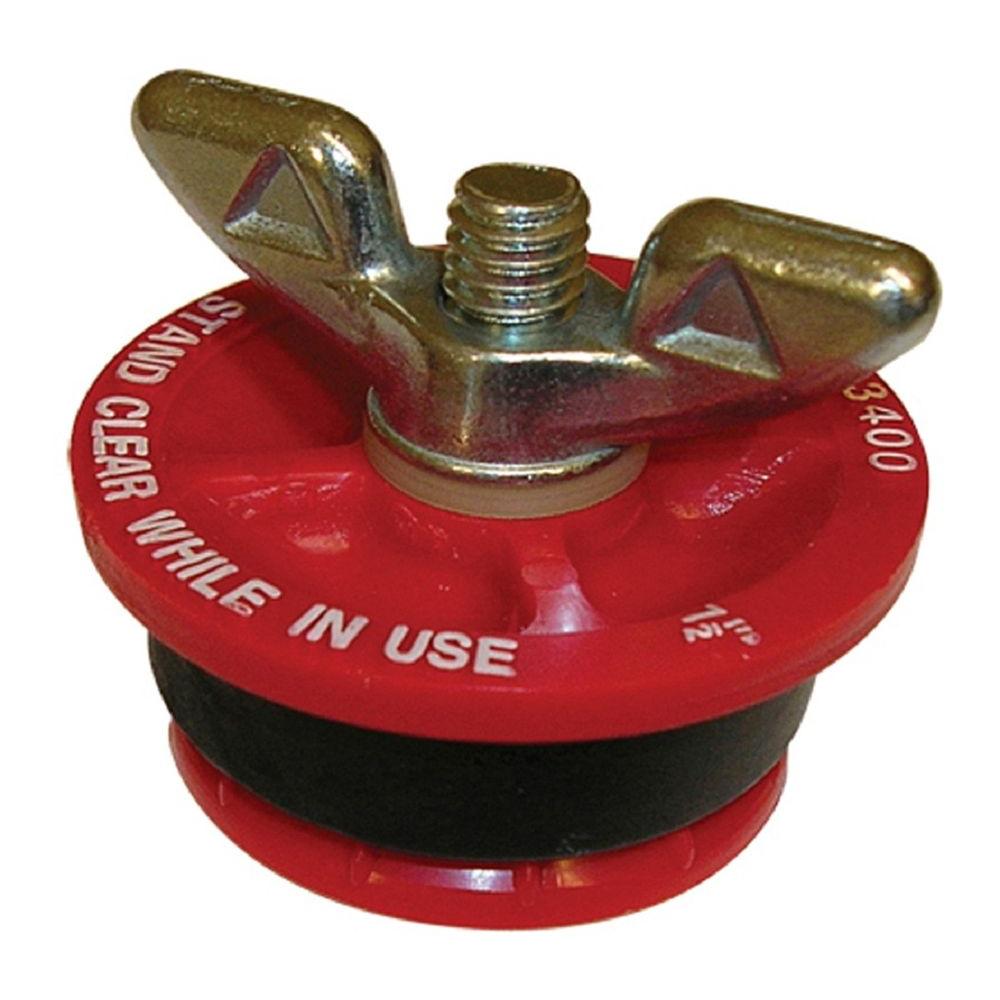ChainsawLullaby
New Member
Hi plumbing pros. A very wet Seattleite here, very stumped by my sump pump.
I have an 1920s home with a fully finished basement and an interior perimeter drain system, including a covered submersible sump pump system tucked away under tile/slab and behind my clothes dryer. All done by previous owners about 15 years ago.
Here’s what the sump pit looked like when opened after some heavy-ish around Christmas. Note that there wasn’t a check valve installed. Also note the short discharge pipe. I assume the discharge pipe ties into the sewer drain along with my bathroom fixtures since it doesn’t appear to discharge anywhere outside.
[Sump pit with old pump](https://imgur.com/gallery/vynvW4H)
We’ve had more rain here in Seattle over the last couple weeks with more in the forecast, so I had a plumber replace the old (10+ years) Zoeller pump (unknown model) with a new Zoeller 1/2 horsepower model plus a check valve (new pump and check valve not pictured).
Well the rains kept coming on cue and the new pump has been cycling often (every few minutes during and right after heavy rain) and a few times per hour (even days after heavy rain). It cycles for only about 5-6 seconds at a time, which I assume is at least partly a function of the small-ish pit.
After the quick pump cycle, a loud, long, and two-parter “pouring” noise, where it sounds like a substantial amount of water is falling back into the pit.
Loud pouring noise video of closed pit (sound on):
I unfortunately don’t have the ability to re-open the covered pit at this time to get a better video. Sorry about that.
My questions:
1) is this pouring back sound normal? Especially since I now have a check valve and since the water doesn’t have much vertical distance to travel to the discharge pipe anyway? I can’t seem to find any videos online that show this and it’s crazy loud.
2) Why would the pit be filling up with water so quickly/the sump cycling so much if I don’t hear water flowing in from the white inlet pipes (see photo above)? Wouldn’t I hear the same pouring water noise? Is it common to also drill holes in the sides/bottom of a sump pit for ground water to seep into (it sort of looks like there might be small holes drilled into the sides in my photo above)? Or perhaps the pump is simply not be clearing and cycling the same water over and over again?
The best part is this pump is one floor below where my head rests on my pillow at night. And this sucker us been hard at work, humming and pouring for several days. I’ll need to break into the good scotch to get some sleep tonight...
Any ideas?
I have an 1920s home with a fully finished basement and an interior perimeter drain system, including a covered submersible sump pump system tucked away under tile/slab and behind my clothes dryer. All done by previous owners about 15 years ago.
Here’s what the sump pit looked like when opened after some heavy-ish around Christmas. Note that there wasn’t a check valve installed. Also note the short discharge pipe. I assume the discharge pipe ties into the sewer drain along with my bathroom fixtures since it doesn’t appear to discharge anywhere outside.
[Sump pit with old pump](https://imgur.com/gallery/vynvW4H)
We’ve had more rain here in Seattle over the last couple weeks with more in the forecast, so I had a plumber replace the old (10+ years) Zoeller pump (unknown model) with a new Zoeller 1/2 horsepower model plus a check valve (new pump and check valve not pictured).
Well the rains kept coming on cue and the new pump has been cycling often (every few minutes during and right after heavy rain) and a few times per hour (even days after heavy rain). It cycles for only about 5-6 seconds at a time, which I assume is at least partly a function of the small-ish pit.
After the quick pump cycle, a loud, long, and two-parter “pouring” noise, where it sounds like a substantial amount of water is falling back into the pit.
Loud pouring noise video of closed pit (sound on):
I unfortunately don’t have the ability to re-open the covered pit at this time to get a better video. Sorry about that.
My questions:
1) is this pouring back sound normal? Especially since I now have a check valve and since the water doesn’t have much vertical distance to travel to the discharge pipe anyway? I can’t seem to find any videos online that show this and it’s crazy loud.
2) Why would the pit be filling up with water so quickly/the sump cycling so much if I don’t hear water flowing in from the white inlet pipes (see photo above)? Wouldn’t I hear the same pouring water noise? Is it common to also drill holes in the sides/bottom of a sump pit for ground water to seep into (it sort of looks like there might be small holes drilled into the sides in my photo above)? Or perhaps the pump is simply not be clearing and cycling the same water over and over again?
The best part is this pump is one floor below where my head rests on my pillow at night. And this sucker us been hard at work, humming and pouring for several days. I’ll need to break into the good scotch to get some sleep tonight...
Any ideas?
Last edited:

